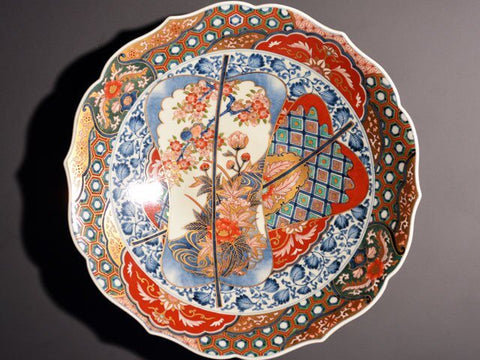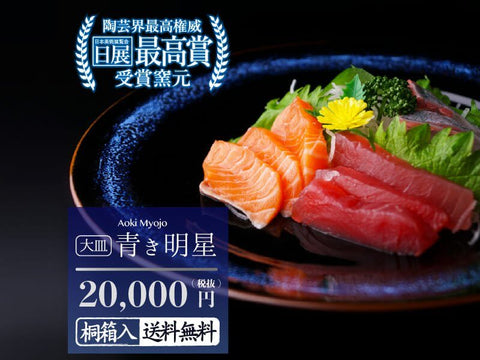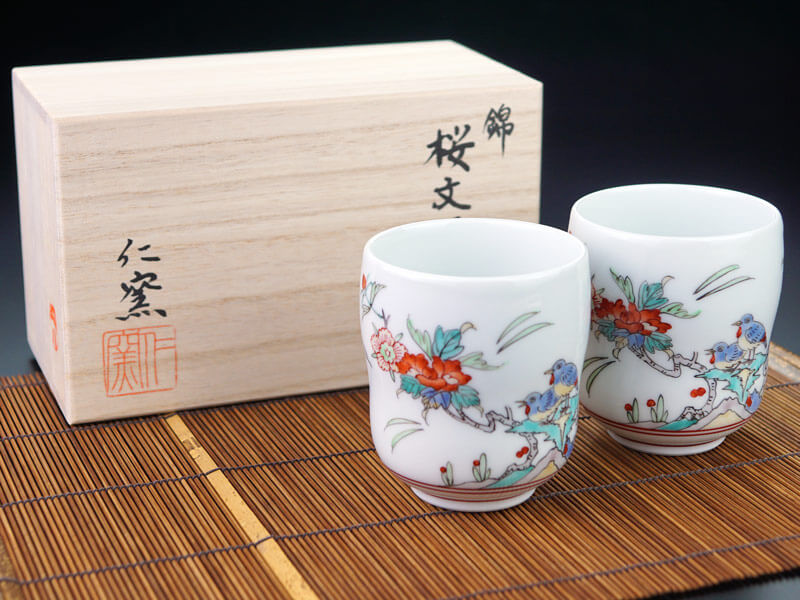Article: Do you know the “value of the plate”? The secret of Arita ware plates that can be judged by their pattern and quality!
Do you know the “value of the plate”? The secret of Arita ware plates that can be judged by their pattern and quality!

Arita Ware, a traditional craft representing Japan!! The Arita Ware available in the ceramics market varies in price and quality, ranging from affordable to high-end. This time, we'll introduce you to "the difference between hand-painted and transfer techniques," "Characteristics of Arita Ware: Three Styles of Arita Ware," and recommend Arita Ware plates with distinctive paintings to help you discern their quality!
Index
- The Key to Deciphering the Value of Decorative Plates Lies in Hand-painting!
- Distinctive Patterns of Arita Ware Plates: The Three Styles of Arita Ware!
- Characteristics of Arita Ware Plates 1
- Gift-worthy pieces available on online shops!! Plates in the "Kakiemon Style," the first to use red for painting!
- ◆ Kakiemon Style ◆
- Characteristics of Arita Ware Plates 2
- The workshop of the prestigious Imaemon is in Arita's Saramachi! Plates in the "Nabeshima Style," another brand representing "Color Nabeshima, Sometsuke, and Seiji"!
- ◆ Nabeshima Hanyo Style ◆
- Characteristics of Arita Ware Plates 3
- Varied in price from inexpensive to expensive! Luxurious golden gifts! Plates in the "Korai Iwamari Style," another type of Arita Ware outside "Kakiemon" and "Nabeshima"!
- ◆ Kinran-de Style ◆
- From "New Home Celebration Gifts" to "Fish-Eating Plates"! Arita Ware Plates Featured on Online Shops
- The Kakiemon Style's Prestigious Artist! Representative Works by the Renowned Artist Yuji Obata from Jingen Kiln!!
- Galaxy-patterned designs are trending online! Works by the Prestigious Artist Shinuemone, utilizing Arita's glazing technique for "durability and a pleasant touch"! Large Plate: Blue Morning Star
- Conclusion
The Key to Deciphering the Value of Decorative Plates Lies in Hand-painting!
There are various types of ceramics in the world, ranging from inexpensive ones sold at 100-yen shops to valuable pieces worth as much as a house. One significant factor in determining the value of plates is whether they are hand-painted or transfer-printed. Transfer is a printing technique used for ceramic decoration, making production and mass production easy. Hand-painted items, on the other hand, require a considerable amount of time. Those handled by our company, such as those by Kosen, can take anywhere from three months to a year to create, whereas typical transfer items don't require the same level of skill or time due to the print. A notable difference is that hand-painted items exhibit irregularities, human-like qualities, and warmth, perceivable through touch, while transfer items lack these characteristics.
Distinctive Patterns of Arita Ware Plates: The Three Styles of Arita Ware!
Arita Ware, one of Japan's most famous ceramics brands, is introduced through its three distinctive styles: "Kakiemon," "Nabeshima," and "Ko-Imari." When you shop online or come across Arita Ware plates in stores, understanding the characteristics of these three styles, known as "Arita Ware San-Yoshiki," can be helpful in assessing the patterns of Arita Ware plates.
Characteristics of Arita Ware Plates 1

Gift-worthy pieces available on online shops!! Plates in the "Kakiemon Style," the first to use red for painting!
The "Kakiemon Style" expresses vivid colors like red, yellow, and green on milky white porcelain. The origin of this technique lies with the prestigious Kakiemon family! The average price of Kakiemon's works is said to be over 20,000 yen. While these pieces are not cheap, you may find reasonably priced plates in large department stores other than online shops. However, be cautious as Kakiemon's works are rarely available online. Notably, in the online sphere, works by Yuji Obata from the Jingen kiln are well-known.
◆ Kakiemon Style ◆
Known as "Dakushu," it is a style depicting asymmetrical and descriptive depictions of seasonal motifs such as flowers and birds on a translucent milky white background with plenty of space. In the later period, purple and gold were added to the original four colors of red, blue, green, and yellow. Many works in the Kakiemon style were exported as colored porcelain, with numerous pieces reaching Europe and inspiring imitations by renowned kilns such as Meissen in Germany.
http://www.school-imari.ed.jp/jouhou/kidssite/nabeshimayakinosyurui/nabeshimayakinosyurui.html
Characteristics of Arita Ware Plates 2

The workshop of the prestigious Imaemon is in Arita's Saramachi! Plates in the "Nabeshima Style," another brand representing "Color Nabeshima, Sometsuke, and Seiji"!
Within the "Nabeshima Style," there are various types, and the one presented here is known as "Color Nabeshima" (alternatively Nabeshima Sometsuke and Seiji). These pieces are created by drawing the outlines with indigo, firing them, and then applying red, yellow, and green colors. As a characteristic of Color Nabeshima compared to Kakiemon, it often conveys the sentiment of "spring" to the viewer. The workshop of the Imaizumi Imaemon, which has produced Color Nabeshima over the generations, is still located on Arita's Saramachi street, bustling with the Arita Ceramics Fair.
http://www.school-imari.ed.jp/jouhou/kidssite/nabeshimayakinosyurui/nabeshimayakinosyurui.html
◆ Nabeshima Hanyo Style ◆
Nabeshima Hanyo has characteristics such as a slightly bluish skin, a raised base, and unique patterns on the back. The technique includes "Color Nabeshima," "Aoshino Nabeshima" with delicate drawings in indigo, and "Seiji Nabeshima" with a natural bluish-green color. Among them, "Color Nabeshima" stands out for its high degree of completion, serving as tableware for the Saga domain and being presented as gifts to various daimyos and the shogunate.For Click here for purchasing exquisite pieces of Nabeshima Hanyo's Color Nabeshima.
http://aritayaki.jp/aritayaki/3yoshiki.html
Characteristics of Arita Ware Plates 3

Varied in price from inexpensive to expensive! Luxurious golden gifts! Plates in the "Korai Iwamari Style," another type of Arita Ware outside "Kakiemon" and "Nabeshima"!
The term "Korai Iwamari Style" refers to Arita Ware following the style of "Old Imari," which was prevalent during the Edo period. In this style, known as "Kinran-de" (gold luster), after completing the painting, gold leaf or gold powder is applied and baked onto the porcelain surface. Among the "Korai Iwamari Style," we will introduce a representative plate using the "Kinran-de" technique known for its intricate, detailed painting.
◆ Kinran-de Style ◆
It refers to a style produced in Hizen Arita during the Edo period, characterized by the use of dense Sometsuke (blue underglaze) and Kinran-de, a technique that lavishly uses red and gold pigments. At that time, these porcelain wares were shipped from the port of Imari in neighboring Imari, giving them the name "Ko-Imari Ware." Sometsuke involves drawing patterns with a blue pigment called "Gosu" on the base and then applying a transparent glaze before firing. Kinran-de involves applying gold foil or gold powder to color-painted porcelain, creating a pattern that is luxurious and extravagant.
http://aritayaki.jp/aritayaki/3yoshiki.html
From "New Home Celebration Gifts" to "Fish-Eating Plates"! Arita Ware Plates Featured on Online Shops
While there are various designs in Arita Ware, including the "Three Styles of Arita Ware," contemporary Arita Ware plates can be found on many online shops that are as impressive as "historical masterpieces," solidly inheriting the traditions of the "Three Styles.
Here, we will briefly introduce Arita Ware plates available on various online shops, "from decorative plates for wedding and new home celebrations" to "durable and affordable Arita Ware plates for everyday use"!
The Kakiemon Style's Prestigious Artist! Representative Works by the Renowned Artist Yuji Obata from Jingen Kiln!!
We mentioned briefly earlier the "Kakiemon Style," and here are plates by the renowned artist Yuji Obata from the Jingen Kiln! These Arita Ware plates feature delicate cherry blossom paintings on a pure white background. While the Kakiemon Style often features mainly red-colored paintings, Yuji Obata's works often emphasize pink.

Incidentally, the pink color applied by Obata in portraying delicate cherry blossoms is renowned for its advanced technique in reproducing realism. Truly, it is a recommended item for a "wedding celebration" that evokes the colors of the new season!
It's a set of five 4-inch small plates. Each plate has a different design, showcasing thoughtful craftsmanship. The elegant, glossy white porcelain features delicate cherry blossoms blooming, with thin peaches, red hues, green leaves, and blue branches, creating a vibrant yet gentle color tone.
https://www.jtopia.co.jp/products/detail/4383
Cherry blossoms are a special flower for the Japanese. They have felt a special beauty in cherry blossoms, appreciating them throughout the ages. The flower language of cherry blossoms is "beauty of the heart." Since ancient times, cherry blossoms have been so beloved that the word for "flower" in Japanese often refers to cherry blossoms. The set of individual plates filled with the spirit of Japan makes it an excellent gift for loved ones. Additionally, it is well-received as a souvenir or gift for people overseas.
https://www.jtopia.co.jp/products/detail/4383
I purchased it as a gift for my parents, and the packaging and wrapping were meticulous, exuding the luxury appropriate for a gift. Moreover, when I requested urgent handling after placing the order, they willingly accommodated it. It was a very pleasant shopping experience. I will definitely use it again if I have the opportunity.
https://shopping.yahoo.co.jp/store_rating/jtopia/store/review/
Galaxy-patterned designs are trending online! Works by the Prestigious Artist Shinuemone, utilizing Arita's glazing technique for "durability and a pleasant touch"! Large Plate: Blue Morning Star
Works by Shinuemone are known for achieving "high durability for everyday use, even with electronic appliances" and a "pleasant touch unique to glass surfaces." The design of this premium plate is beautiful, with a galaxy spreading across the entire surface of the plate! Before the bisque firing, the selected glaze by Shinuemone is applied, and then the glaze is melted at high temperatures, realizing the unique texture of glass surfaces and the beautiful decoration that deeply shines with a galaxy color.

The breathtaking brilliance of the starry sky, speckled patterns resembling obsidian, and the eternal beauty reflected make you feel as if you are forgetting time. Occasionally, the flowing white kiln changes create a sense of flowing stars, comets, and an elegant atmosphere.
It's a large plate with a wide rim, measuring 26 cm, making it perfect for showcasing main dishes such as meat or fish dishes elegantly. Its versatile use extends to stir-fries or single servings of pasta or fried rice.
https://www.jtopia.co.jp/products/detail/4851
The more you look at it, the more mysterious and beautiful it becomes. I purchased it as a Western-style plate. The blue line drawings with irregular black sparkle and the fantastic and beautiful patterns impressed me.
https://www.jtopia.co.jp/products/detail/4851
Conclusion
How was it? We've introduced hand-painted decorative plates that follow the flow of high-end art, as well as Arita Ware plates with a dignified atmosphere for daily use.


